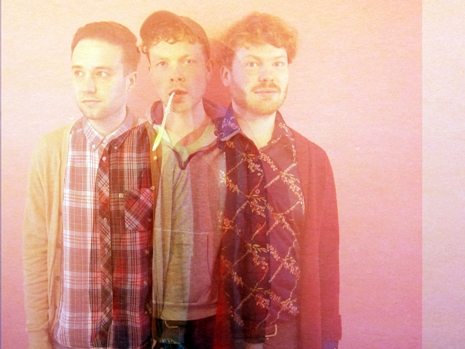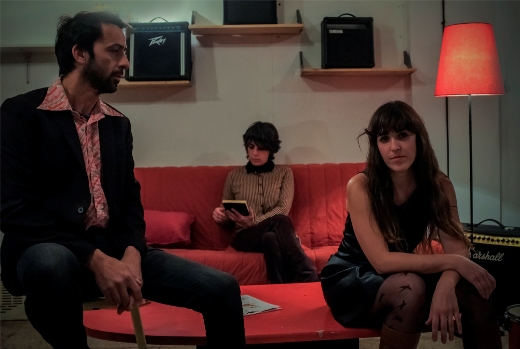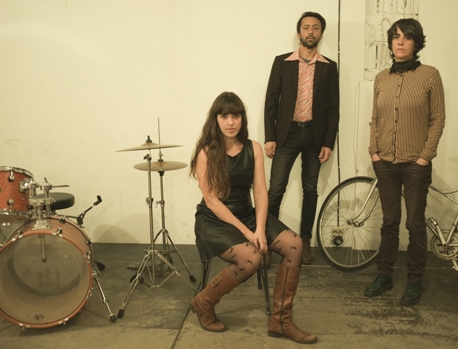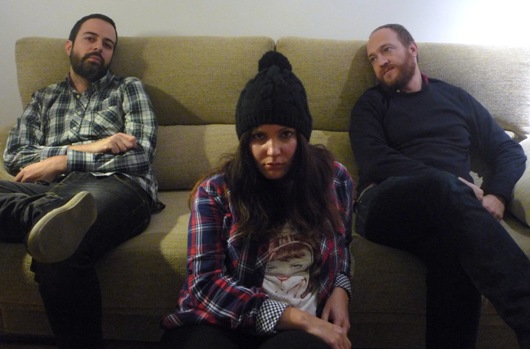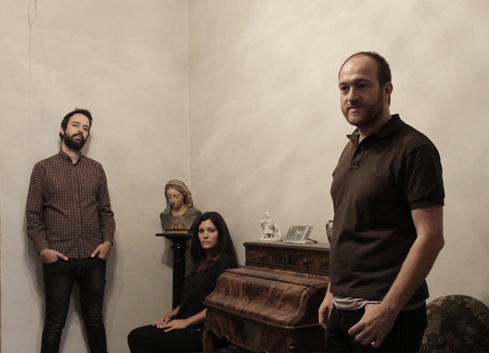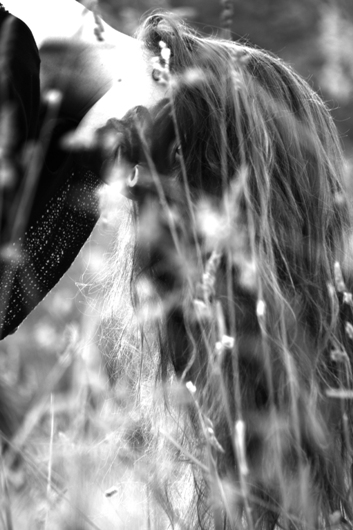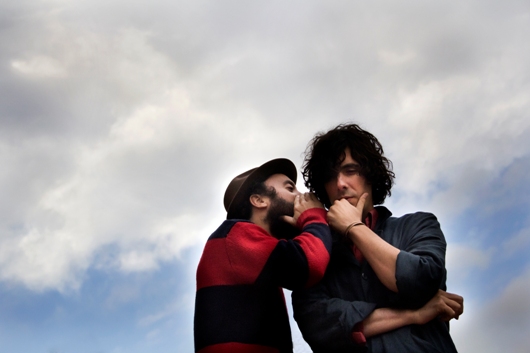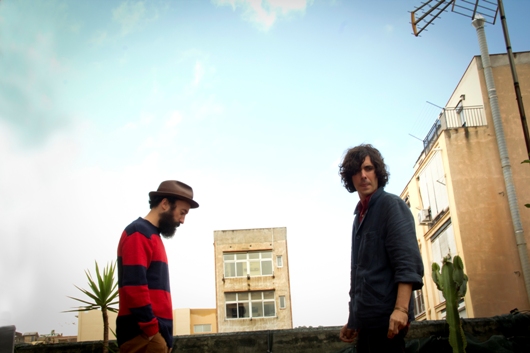Seventh and final post about the groups playing Emergència! 2014. We’ve spoken to Kíar, Gente Joven, Escarlata, Desert, Cuello, Montgomery and, now: Cold Pumas.
Over a blanket of repetition, melody. Over an abstract idea, precision. The world of Cold Pumas is built on apparent contradictions pregnant with sense and sensibility. The Brighton band comes of age at Emergència!, presenting their rock in a loud, experimental vein. Repetitive, hypnotic and intense.
We spoke to Patrick Fisher, the man behind the lyrics of all of the band’s songs. Fisher reels off details and references as he thinks out loud about the group, a champion of the most experimental side of alternative rock.
How did you start out as a band and why?
Dan, Oliver and I started the band in Brighton, when we first moved there around six years ago. We’d all lived in Exeter in the southwest before, and had formed the disco/funk-accommodating outfit entitled Oh Hell No, which I suppose was the first rung on the ladder to what ended up as Cold Pumas. It was a largely improvised entity, playing our most notable shows in the basement of a bookshop, so in that sense, perhaps Cold Pumas—or whatever it was before we christened it with that retrospectively regrettable name—was the idea of taking the loud, self-indulgent approach, and the Kraut influence that Can-enamoured John from the bookshop had pointed out, and harnessing it into something “proper”. In all honesty, we probably sounded like a misguided loop of The Rapture in the beginning, so it was fortunate that it took us about a year to play our first show.
Why the repetition in your music?
It’s hard to say objectively whether that’s changed over time. Certainly for the earlier songs we penned, it was our default setting when it came to playing together—in some ways because it’s comforting and self-satisfying to play something over and over again—and, in a more credible sense, because we’ve always liked things, disparate as they may be, where for example a change in the bass beneath a repeated part creates either a sad or euphoric moment that rewards or justifies the repetition of what has gone before. As things became less overloaded and spasmodic—especially rhythmically—in the songs that were the basis of what became Persistent Malaise, the repetitive approach has hopefully become subtler, the root rather than the purpose of each song.
What exactly is your approach to music? I read something about “metronomic rhythms mixed with noise”. That reminds me of good bands from the old days, from Neu! to Spacemen 3.
In the midst of writing a plausible second album, it’s suddenly quite hard to be objective again. On many separate occasions, we’ve fretted in the depths of a fruitless band practice and wondered “what is it we do again?!”, and then imperceptibly something comes together and we breath a collective sigh of relief. So while “metronomic rhythms mixed with noise” is not inaccurate, it makes me think of something that could be perceived to be detached and emotionless—even po-faced—which is perhaps not how I see us anymore. Although I am not to be the judge! In a perverse way, perhaps Cold Pumas is an anomaly for us in terms of not reflecting the obvious way any of us would approach music (perhaps that’s relevant to the crutch of repetition; the tension of ticking over, waiting for the inspiration!). Now we’re a four-piece, and three of the four are London-based, it’s changed this approach again. We now can’t fritter away weekly practices on indulgent wibbling and Kings of Leon pastiches, so we’ve had to find a fresh if somewhat inconsistent way of working anew. But I think such forced change has been invigorating in a sense—writing songs has always been a slog—and certainly it’s liberating to have a fourth set of opinions and ideas and directions, which has the advantage of objectivity.
Could you give me the names of five or six bands or musicians (or even styles) that have influenced you as a band—that inform your DNA as a project. I need the names, a YouTube link and a brief explanation of how the band and the song have influenced you, and why you picked these songs.
WOMEN – EYESORE
We played a handful of shows with Women over the course of a few years and got to know them, prior to their break-up and the sad and humbling loss of Chris Reimer. They were the first band we’d played with in a long time that we found the rare duality of a musical and personal kinship with, and that “Calgary Sound” continues to possess the melancholic urgency that bound us to Women instantaneously. Hearing Eyesore prior to the release of Public Strain made me question a lot of what we were doing up to that point, and I’m very glad it did. I like the unofficial video, too.
SONIC YOUTH – RAIN ON TIN
http://youtu.be/HwIDcobO4l4
DEERHUNTER – CRYPTOGRAMS
The first Deerhunter song I heard was Hazel Street, which is possibly my favourite thing they’ve ever done, but Cryptograms, the album, became a useful signpost in the practice room for describing abstract notions of what we wanted/didn’t want. I actually think Cryptograms, the song, sounds more like Dan’s other band, The Soft Walls, but I’ll let you be the judge of that.
EX-MODELS – THAT’S FUNNY I DON’T FEEL LIKE A SHITHEAD
Listening to this now, it’s embarrassing how much we poorly attempted to emulate what is perhaps the epitome of Ex-Models at the height of their relentlessness. The reason I’ve chosen a live version in a comparatively intimate venue is because it represents the three of us watching them in similar surroundings—the first time we saw them with Kid Millions on drums—and being absolutely in awe.
NEU! – NEGATIVLAND
Everything that has been described as “Kraut-revivalist” in the last few years, with obvious exceptions, is predominantly referencing Neu’s Hallogallo above anything else. In terms of the rhythmic embodiment of such an influence, Hallogallo is admittedly the purest reference point, but Negativland—particularly at its most accelerated—is probably more of a relevant reflection.








